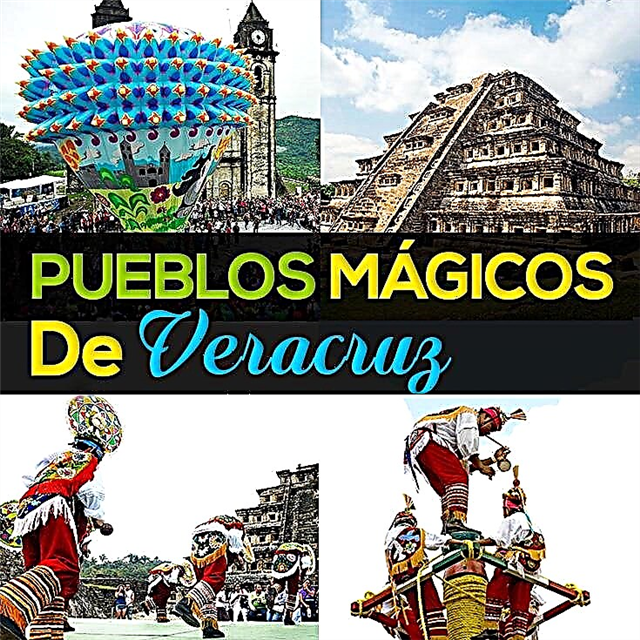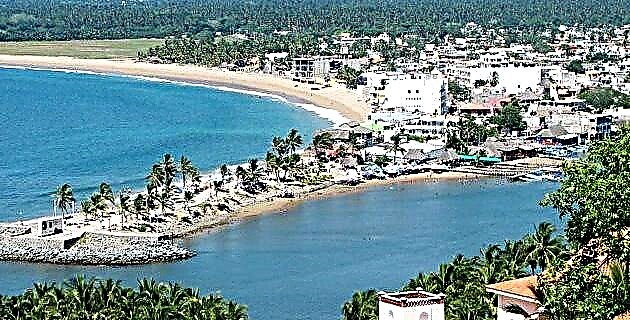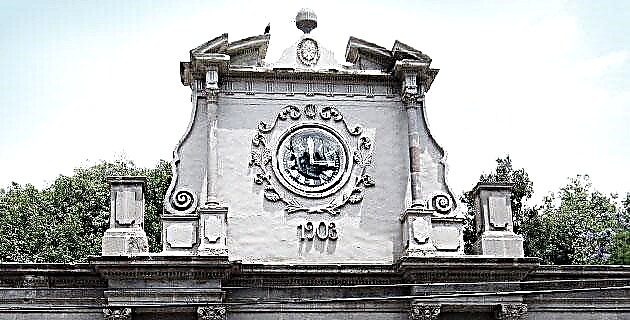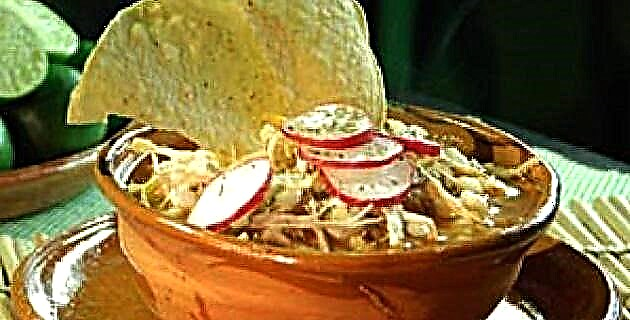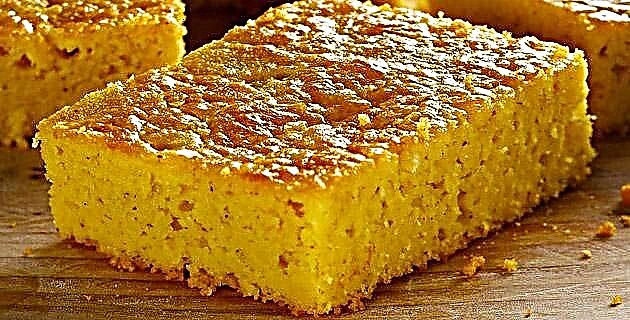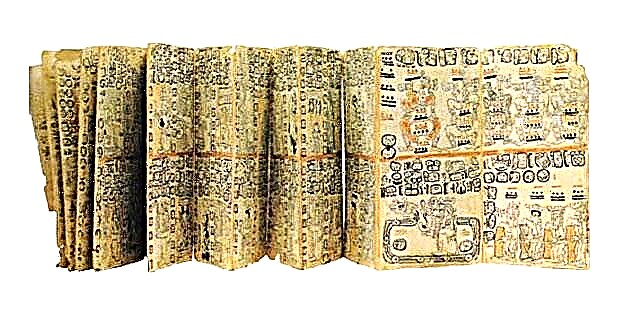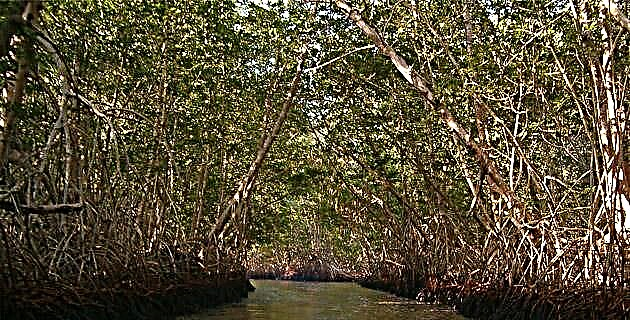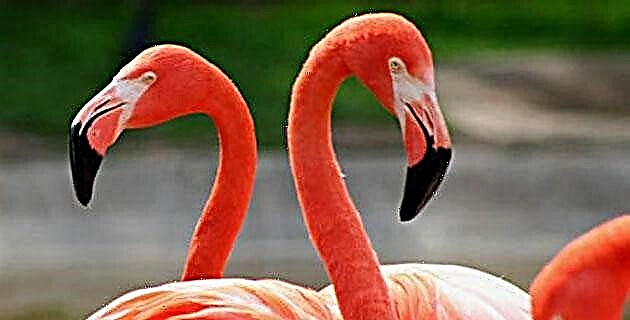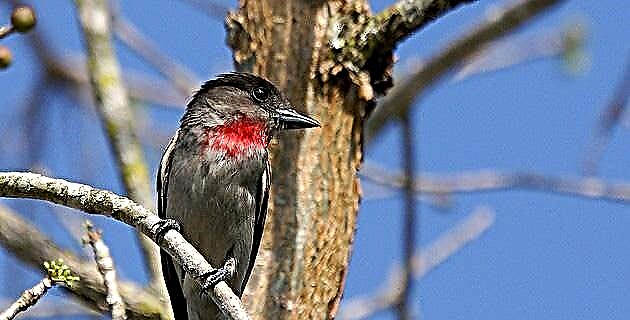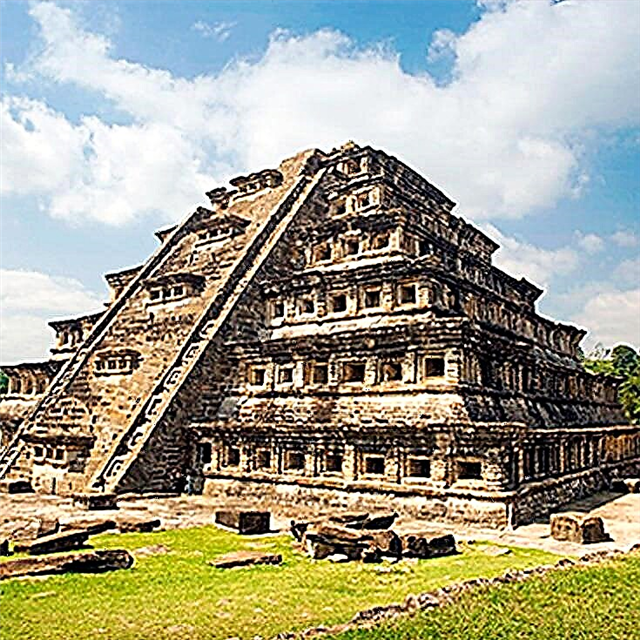Veracruz It has 6 Magical Towns, in which you will find attractive architecture, beautiful landscapes, excellent cuisine and places to rest relaxed in towns with pleasant mountain climates.
1. Coatepec

In this Magic Town of Veracruz, orchids compete with coffee for the primacy in the interest of tourists.
With a cool climate and 1,200 meters above sea level, local conditions are ideal for the cultivation of the two plant species, one that captivates for its flavor and aroma, and the other for its beauty.
The cultivation of the coffee tree began in the 18th century and would give prosperity to the town until the beginning of the 20th. The aroma of coffee is felt in plantations, homes, coffee shops and in the dedicated museum, which operates in a beautiful house, on the way to Las Trancas.
Bromeliads and orchids moved from their natural habitat in the humid and cold foggy forests to the gardens, corridors and patios of houses and public areas of Coatepec.

The Orchid Garden Museum, located at Ignacio Aldama 20, exhibits a collection of nearly 5,000 varieties that live in a habitat specially conditioned to enhance their beauty and conservation.
In Coatepec you also have the Cerro de las Culebras, the Montecillo Ecotourism Recreational Park and the La Granada Waterfall, so you can practice your favorite outdoor entertainments.
In the town, it is worth admiring the Municipal Palace, the House of Culture, the parish temple of San Jerónimo and the Hidalgo Park.
Be sure to try one of the typical dishes of Coatepec, acamayas, similar to shrimp, in the company of a Torito de la Chata, prepared with rum, fruit and condensed milk. And of course, a coffee!
- 10 Things To Do And See In Coatepec, Veracruz
- Coatepec, Veracruz - Magic Town: Definitive Guide
2. Papantla de Olarte

To speak of Papantla is to speak of the Dance of the Flyers and the cultivation of vanilla. Also, its civil and religious buildings and monuments, as well as its archaeological zone.
The Dance of the Voladores is the greatest intangible heritage of the town, a folkloric manifestation immortalized with the name of Voladores de Papantla.
Oddly enough, vanilla, that delicious topping used in so many desserts, is a genus of orchids.
Vanilla planifolia is native to the Pueblo Mágico and has the protective trade name of "Vanilla de Papantla" that has its monument in the town. It will be a luxury if you eat a snack prepared with the famous local vanilla.

El Tajín, an archaeological site located 9 km from Papantla, was the capital of the Totonac empire and is distinguished by a pyramid that has 365 niches on its 4 faces, probably a calendar in which each space represents one day of the year.
When touring Papantla you must stop to admire the Church of Christ the King, the Temple of Our Lady of the Assumption, the Municipal Palace and the Israel C. Téllez Park.
At a central elevation in Papantla is the Monumento al Volador, a beautiful sculpture from which there are magnificent panoramic views of the town.
The Museum of Masks is another place of Papanteco interest where the pieces used in the typical dances that animate the town's celebrations are exhibited.
- Papantla, Veracruz, Magic Town: Definitive Guide
3. Zozocolco de Hidalgo

Zozocolco is a Veracruz colonial Magical Town located in the Totonacapan mountain range. Its welcoming architectural landscape is dominated by the Church of San Miguel Arcángel, built by the Franciscan friars who evangelized the territory and inside which several beautifully made colonial altarpieces stand out.
The patron saint festivities in honor of San Miguel are held between September 24 and October 2, filling the town with color, joy and healthy fun.
The San Miguel festivals are covered with great mysticism, in which pre-Hispanic traditions, such as dances, coexist with Christian customs.
Another spectacle worth seeing in Zozocolco is the Balloon Festival, which is held between November 11 and 13, with pieces made with Chinese paper, as part of a contest event.

The colorful handmade balloons can measure up to 20 meters and the village artisans teach in their workshops how to make them.
In the vicinity of the Magic Town there are numerous pools and waterfalls, such as La Polonia and La Cascada de Guerrero, to enjoy the beauty of the landscape, the observation of biodiversity and the practice of outdoor entertainment.
The delicious local cuisine offers dishes such as moles, barbecues, and bean tamales called púlacles. If you want to take a souvenir from the Magic Town, the members of the Totonaca ethnic group make attractive rubber sleeves and pita works.
- Zozocolco, Veracruz: Definitive Guide
4. Xico

The attributes that in 2011 elevated Xico to the category of Mexican Magical Town were mainly its splendid architecture, its museums and its culinary art, in which the Xico and Xonequi mole stand out.
The Plaza de los Portales shows a viceregal atmosphere, with traditional houses on cobbled streets. In the middle of the square is an Art Deco gazebo that creates a charming contrast to the colonial setting.
The Temple of Santa María Magdalena is a building built between the 16th and 19th centuries, with a neoclassical façade, with monumental domes and twin towers.
One of the most visited places in the Magic Town of Veracruz is the Dress Museum, which exhibits more than 400 costumes beautifully embroidered and given to Santa María Magdalena, patron saint of the town.
The most typical prints of local and national culture are recreated in the curious Totomoxtle Museum, with figurines made with corn leaves by Socorro Pozo Soto, a popular artist with more than 40 years in the trade.
In Xico they prepare a mole that bears the name of the town and is its main gastronomic symbol. The recipe was invented 4 decades ago by Doña Carolina Suárez and the Mole Xiqueño company sells 500 thousand kilos a year.
Another standard of Xiqueño cuisine is Xonequi, prepared with black beans and a leaf named Xonequi whose plant grows wild in the town.
If you go to Xico for its patron saint festivities, on July 22 you can enjoy the Xiqueñada, a popular bullfighting show in which spontaneous bullfighters fight various bulls in the streets of the town.
- Xico, Veracruz - Magic Town: Definitive Guide
5. Coscomatepec

Beautiful and historic buildings, wonderful natural landscapes and excellent bread make up the trilogy of great attractions of the Magic Town of Veracruz, Coscomatepec de Bravo, a town that kindly shelters you with its cool and foggy climate.
The vital center of the town is the Constitution Park, a space with a beautiful kiosk, surrounded by the most representative buildings, such as the Church of San Juan Bautista, the Municipal Palace and the typical portals.
The Church of San Juan Bautista has gone through various vicissitudes throughout its history, due to the instability of the land on which it is located.

The great jewel preserved in the temple is one of the three images of the Christ of Agony or Christ of Limpias that exist in the world. The other two are in churches in Havana, Cuba and Cantabria, Spain.
La Fama Bakery is one of the distinctive emblems of Coscomatepec, with more than 90 years of history. Many people go to town especially for the exquisite bread that comes out of the wood-fired ovens of this almost century-old commercial house, which also sells other delicious products, such as huapinoles, coscorrones and maidens.
Another place of interest is the Tetlalpan Museum, which shows more than 300 archaeological objects rescued around the town.
Coscomatepec's natural lookout is the Pico de Orizaba, the highest point in the country, on whose slopes locals and visitors practice various outdoor sports.
- Coscomatepec, Veracruz - Magic Town: Definitive Guide
6. Orizaba

The Magic Town of Veracruz that bears the name of the highest summit in the country is one of the most beautiful and traditional cities in all of Mexico.
Orizaba was viceregal capital between 1797 and 1798, in prevention of an English attack on the Port of Veracruz, and it was also the capital of the state from 1874 to 1878.
This past of ancestry allowed to form a city of elegant architecture and very cultured in its customs, of which innumerable buildings continue to attest.
Among the constructions that embellish Orizaba we must mention the Cathedral of San Miguel Arcángel, the Palacio de Hierro, the Great Ignacio de la Llave Theater, the Ex Convent of San José de Gracia and the Municipal Palace.

Other magnificent buildings are the Sanctuary of La Concordia, the Castillo Mier y Pesado, the Church of Calvario, the Town Hall and the Municipal Historical Archive.
The Palacio de Hierro is probably the most beautiful building in the city. It is the only metallic palace in the world in the Art Nouveau style and its design came from the drawing table of the famous Gustave Eiffel, when Orizaba had the luxury of hiring the world's leading art figures.
Both the metal frame and the other materials (bricks, wood, wrought iron and other components) of the Iron Palace were imported from Belgium.
Orizaba is home to the Veracruz State Art Museum, which works in a beautiful 18th century building that was originally the San Felipe Neri Oratory.
This is the most complete art museum in the Gulf of Mexico area, housing more than 600 pieces, 33 of them, the work of Diego Rivera.

Orizaba is served by a modern cable car that ends at Cerro del Borrego, offering spectacular panoramic views of the city and the natural landscapes.
- Orizaba, Veracruz - Magic Town: Definitive Guide
We hope that you have enjoyed this walk through the Magical Town of Veracruz, thanking you for any comments to enrich the information we provide to our community of readers.
Discover more Magical Towns to enjoy on your next trip !:
- The 112 Magical Towns of Mexico You Need to Know
- The 10 Best Magical Towns in the State of Mexico
- 12 Magical Towns Near Mexico City That You Need To Know
